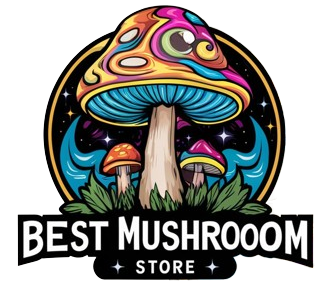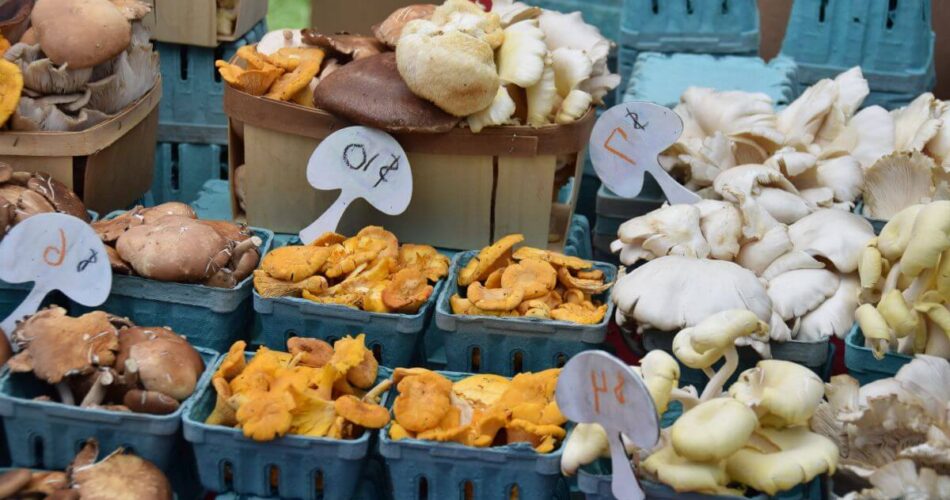In this post, we will take a closer look at the different types of magic mushrooms, their effects, and how to identify them. The effects of magic mushrooms vary depending on the species, but they are generally considered to be hallucinogenic.
Psilocybin mushrooms are hallucinogenic mushrooms that contain psilocybin, psilocin, baeocystin, and norbaeocystin. Despite the fact that several nations have outlawed the use of these drugs in religious ceremonies and recreational settings, they are still cultivated and collected. What are the most popular types of magic mushrooms?
Types of Magic Mushrooms
Magic mushrooms are a type of fungi that contains psychoactive compounds. These compounds can produce changes in perception, mood, and cognition. Magic mushrooms are used for recreational, therapeutic, and religious purposes.
There are many different types of magic mushrooms, each with its own unique effects.
The most popular types of magic mushrooms are psilocybin mushrooms, also known as “magic mushrooms” or “shrooms”. Psilocybin mushrooms are the best-known and most widely studied type of magic mushroom. Let’s take a look at the most popular shrooms out there.
Psilocybe Cubensis
Psilocybe cubensis is a psilocybin-containing mushroom that has many nicknames, including magic mushrooms, shrooms, and boomers. This fungus is most commonly found in the tropical areas of South America, Mexico, and Southeast Asia. It is a member of the strophariaceae family.
History
This mushroom has a long history of use in shamanic and religious ceremonies. The Aztecs used it in their rituals and referred to it as “teonanacatl” or “flesh of the gods.” The first recorded use of psilocybe cubensis in the Western world was by French naturalist and explorer Rene-Primevere Lesson, who discovered it growing on livestock dung in 1838.
Look
It is a small to medium-sized mushroom with a cap that is 2-6 inches in diameter. The cap is convex to flat in shape and is yellow-brown to reddish brown in color. The gills are attached to the stem and are dark brown to black in color. The stem is 0.8-2.3 inches tall and is thin and hollow. It has a white spore print.
This mushroom is most commonly found growing on cow dung, but can also be found growing on horse dung, straw, and other decaying organic matter. It is a warm weather mushroom and prefers humid climates.
Psilocybe Semilanceata
Psilocybe semilanceata, also known as Liberty Cap, is a hallucinogenic mushroom that contains psilocybin and psilocin. This mushroom grows naturally in the wild and has been used for centuries by indigenous people for its psychoactive properties. Psilocybin is converted into psilocin in the body, and it is this compound that is responsible for the psychedelic effects.
History
Psilocybe semilanceata has a long history of use in traditional medicine and shamanic rituals. The Mazatec people of Mexico have used this mushroom for healing and divination purposes for centuries. In the West, it was first identified by Robert Gordon Wasson, an ethnomycologist, in 1957. Wasson’s work helped to popularize the use of psychedelic mushrooms in the West.
Look
Psilocybe semilanceata is a small mushroom that typically grows in grassy areas. The caps of these mushrooms are usually between 0.3-0.8 inches in diameter and are conical or bell-shaped. The caps are reddish-brown to brown in color and may have a white or yellowish stipe. The gills of this fungus are pale to dark brown and are adnate or decurrent.
Places of Occurrence
This mushroom typically fruits in the late summer and fall. It can be found in Europe, North America, and Australia. In the United States, semilanceata is most commonly found in the Pacific Northwest.
Psilocybe Mexicana
Psilocybe Mexicana is a type of psychedelic mushroom that is indigenous to Mexico. It is one of the most potent types of psychedelics, with effects that can last up to 6 hours. This type of mushroom has a long history of use in Mesoamerican cultures, and was even worshiped by the Aztecs as a deity.
Look and Effects
Psilocybe Mexicana is characterized by its small, brownish-red cap, and thin white stem. The mushroom contains the psychoactive compounds psilocybin and psilocin, which cause hallucinations and altered states of consciousness. When consumed, it can produce powerful visual and auditory hallucinations, as well as changes in perception, mood, and thought.
Ways of Use
Psilocybe Mexicana is traditionally used for shamanic purposes, and is often taken in a ceremonial setting. It is said to help users connect with the spiritual world, and can be used for divination and healing. The mushroom is also used recreationally, and its effects are often described as being similar to those of LSD.
Psilocybe Azurescens
Psilocybe azurescens is a species of mushroom that is native to the Pacific Northwest region of North America. It is one of the most potent psychedelics, with an active ingredient (psilocybin) that is about 10 times as strong as LSD. The effects of psilocybin are similar to those of other psychedelics, such as LSD or mescaline. They can include altered states of consciousness, visual and auditory hallucinations, and changes in perception and mood.
Looks
Psilocybe azurescens is a large mushroom that typically grows on wood chips or rotting logs. The cap is blue-gray in color and may have a yellowish tinge. The gills are dark blue-gray and free from the stem. The stem is typically 2-5 inches long and 0.3-0.8 inches thick. It is white or off-white in color and may have blue bruising.
Places of Occurrence
This mushroom is found in the Pacific Northwest region of North America, specifically in the states of Oregon, Washington, and California. It has also been found in British Columbia, Canada.
The effects of psilocybin typically last for 4-6 hours. The peak of the experience usually occurs after 1-2 hours.
Other Types of Magic Mushrooms: Panaeolus Cyanescens
Panaeolus cyanescens is a potent hallucinogenic mushroom that has been used for centuries by cultures around the world. It is also known as the “blue meanie” or “blue runner”. It is found in many parts of the world, including North America, Europe, Asia, and Africa.
In the wild, this mushroom typically grows on manure or other decomposing organic matter. P. cyanescens is also a popular choice for cultivation, as it is relatively easy to grow and produces large quantities of mushrooms. It typically fruits in the late summer or early fall. When cultivated indoors, it can fruit year-round.
Look and Effects
The effects of P. cyanescens are typically felt within 20-30 minutes after ingestion, and can last for up to 6 hours.
The caps of the mushrooms are 1.2–3.1 inches in diameter, convex to broadly convex, and have a brownish center that fades to a paler margin. The gills are dark brown, adnexed or slightly notched, and close together.
Keep in mind that picking up any mushrooms in the wild can be dangerous, because edible types of magic mushrooms can be easily confused with poisonous species.
Similar Posts:
- Psilocybe Subcaerulipes: A Japanese Mushroom That Contains Psilocybin. History & Morphology of the Species
- Psilocybe Baeocystis – Unusual Psilocybin Species. Identification, Potency & Characteristics
- Psilocybe Hispanica: Recently Identified Magic Mushroom From Spain. What Is So Special About This Fungus?
- Psilocybe Bohemica: A Psilocybin Mushroom From Europe. All the Information You Need to Know About the Species
- Psilocybe Caerulipes – Description of a Magic Mushroom, Its Potency and Habitat
- What Do Shrooms Look Like? Types of Magic Mushrooms and Their Characteristics. Psilocybin Mushrooms vs. Toxic Ones
- Psilocybe Fimetaria: All You Should Know About This Magic Mushrooms Species





